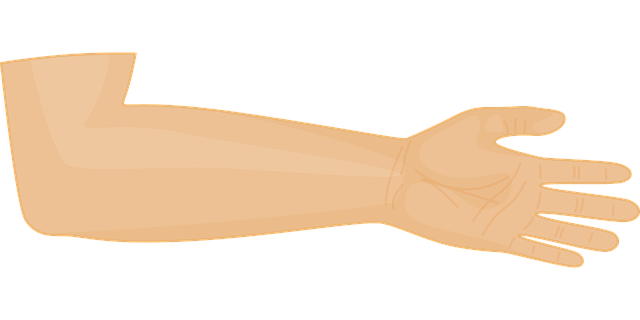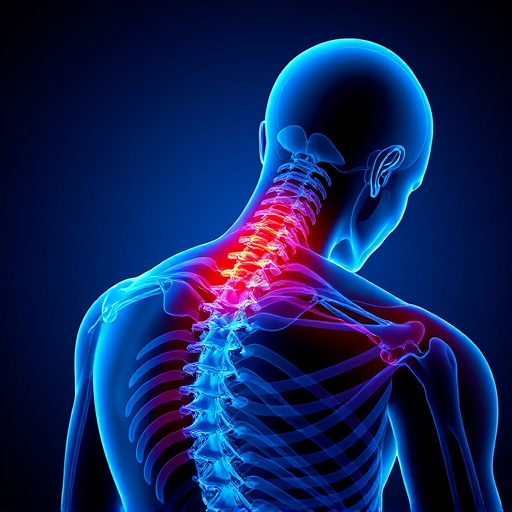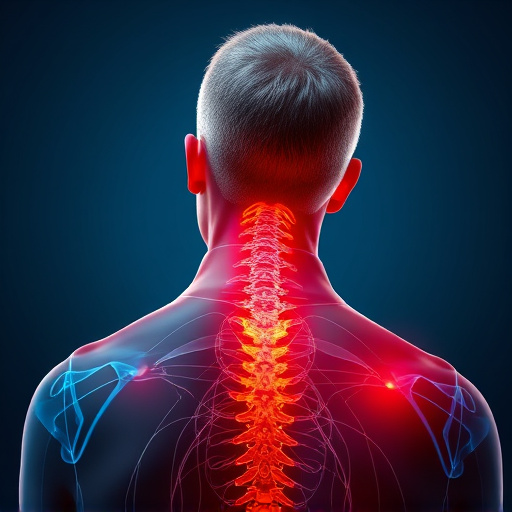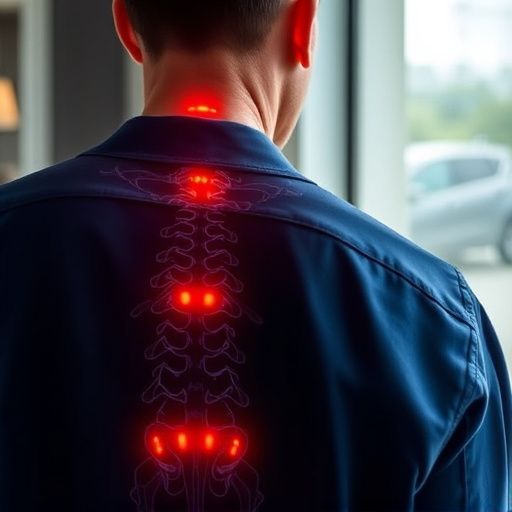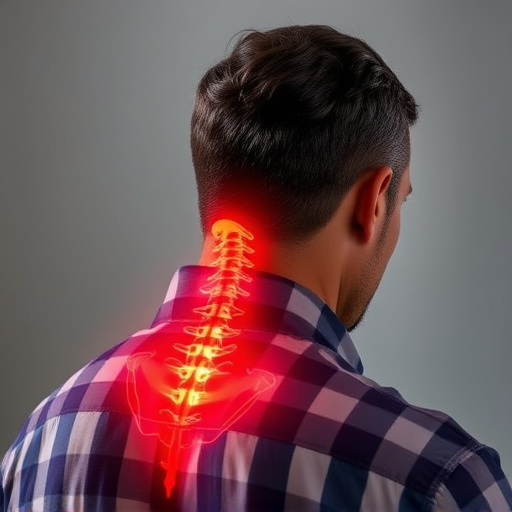Cervical pain and stiffness disrupt daily life, with causes ranging from poor posture to serious conditions. The PIP insurance 14-day rule mandates substantial improvement within two weeks of injury; failure requires further medical assessment for effective management. Many turn to PIP for financial support, covering medical expenses for neck injuries without pre-approval during this initial period. Adhering to the deadline ensures prompt treatment and claim processing. Non-invasive treatments like physical therapy, heat/cold therapy, and chiropractic care provide faster relief; regular exercise and ergonomic practices prevent and manage cervical discomfort.
Are you suffering from persistent cervical pain and stiffness? This comprehensive guide aims to provide much-needed relief. We explore the root causes and symptoms of neck discomfort, with a focus on understanding the ’14-day rule’ of PIP (Personal Injury Protection) insurance claims. Discover non-invasive treatments, effective physical therapy routines, and ergonomic lifestyle changes to alleviate pain and improve mobility long-term.
- Understanding Cervical Pain and Stiffness: Causes and Symptoms
- The Role of PIP Insurance in Covering Treatment Expenses
- 14-Day Rule: What It Means for Claiming Benefits
- Non-Invasive Treatments for Relieving Cervical Discomfort
- Physical Therapy and Exercises to Improve Mobility
- Lifestyle Changes and Ergonomic Tips for Long-Term Relief
Understanding Cervical Pain and Stiffness: Causes and Symptoms

Cervical pain and stiffness can significantly impact daily life, making even simple tasks uncomfortable. Understanding the root causes is crucial for effective relief. Common symptoms include persistent neck discomfort, reduced range of motion, and headaches, often radiating to the shoulders and arms. This condition may arise from various factors such as poor posture, muscle tension due to stress or prolonged periods of inactivity, or more serious underlying issues like herniated discs, arthritis, or inflammation.
The 14-day rule, as outlined by PIP (Personal Injury Protection) insurance policies, is a relevant consideration when dealing with cervical pain. This rule stipulates that symptoms should significantly improve within two weeks of injury or onset. If not, further medical assessment and treatment may be necessary to manage the condition effectively, ensuring a full recovery or long-term relief from discomfort and stiffness in the cervical area.
The Role of PIP Insurance in Covering Treatment Expenses

Many individuals dealing with pain and stiffness in the cervical area, often requiring specialized treatments, turn to their Personal Injury Protection (PIP) insurance for financial support. PIP insurance is designed to cover medical expenses and other related costs for those involved in motor vehicle accidents. When it comes to neck-related injuries, this coverage can be invaluable. The 14-day rule, a stipulation within PIP policies, allows policyholders to initiate treatment without prior authorization from their insurer, ensuring swift access to necessary care.
This is particularly beneficial for cervical pain and stiffness cases, where timely intervention may significantly impact recovery outcomes. Once the initial 14-day period elapses, PIP insurance typically requires providers to obtain pre-approval for certain treatments or procedures, but this rule encourages proactive patient care, enabling individuals to focus on healing without immediate financial worries.
14-Day Rule: What It Means for Claiming Benefits

The PIP insurance 14-day rule is a crucial aspect to understand when claiming benefits for pain and stiffness in the cervical area. This rule stipulates that policyholders must typically file their claims within 14 days of the incident or the onset of symptoms, whichever is earlier. The primary purpose of this deadline is to ensure prompt treatment and documentation of the injury, making it easier to verify and validate the claim.
Adhering to the 14-day rule is essential for a smooth claims process. If you fail to file your PIP claim within this timeframe, it may result in delays or even denial of benefits. It’s important to remember that the clock starts ticking from the date of the incident or when you first experienced symptoms, so act promptly to protect your rights and secure the relief you need for your cervical pain and stiffness.
Non-Invasive Treatments for Relieving Cervical Discomfort

Many individuals suffering from pain and stiffness in the cervical area opt for non-invasive treatments as a safer and more comfortable alternative to surgery. There are several effective options available, especially with the support of PIP (Permanent Impairment) insurance coverage, which often includes a 14-day rule allowing quick access to care. Techniques such as physical therapy, including specialized exercises and manual adjustments, can significantly reduce discomfort and improve mobility. Heat or cold therapy, along with over-the-counter pain medications, are also common non-invasive approaches to managing cervical stiffness and pain.
Additionally, chiropractic care plays a crucial role in non-invasive treatment plans, offering gentle manipulations to realign the spine and alleviate pressure on nerve roots. Some patients also find relief through targeted massage therapy, which relaxes muscles and increases circulation in the cervical region. These non-invasive treatments often provide faster results compared to prolonged medication use and are generally more cost-effective, making them attractive options for those seeking immediate and lasting relief from cervical discomfort.
Physical Therapy and Exercises to Improve Mobility

Physical therapy plays a crucial role in alleviating pain and improving mobility in the cervical region, especially after an injury or chronic condition. A trained physiotherapist can design a personalized treatment plan that includes specific exercises tailored to enhance flexibility and strength in the neck muscles. These exercises might include gentle stretching routines, strengthening maneuvers for the neck and shoulder blades, and specialized techniques to reduce stiffness.
One effective approach is to follow a structured program over a 14-day period, as guided by PIP (Personalized Integrated Program) insurance plans. This timeline ensures a gradual progression of exercises, allowing individuals to experience relief from pain and increased cervical mobility safely. The 14-day rule provides a framework for both patients and therapists to track progress, making it easier to adjust the treatment plan as needed.
Lifestyle Changes and Ergonomic Tips for Long-Term Relief
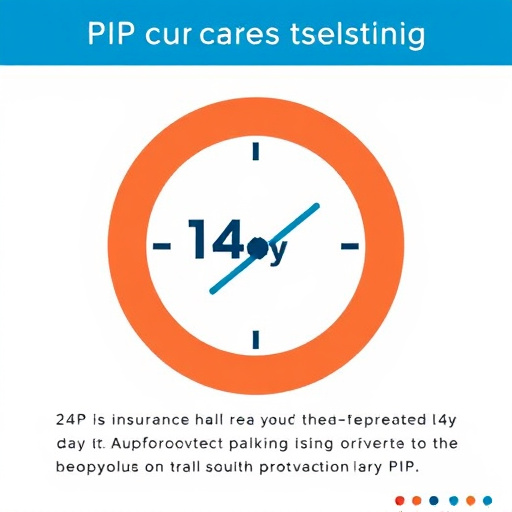
Making sustainable lifestyle changes and adopting ergonomic practices can significantly alleviate pain and stiffness in the cervical area, offering long-term relief for individuals seeking to manage their symptoms effectively. Regular exercise, particularly focusing on strengthening the neck and shoulder muscles, has been proven beneficial. Activities such as swimming, yoga, or gentle stretching routines can improve flexibility, enhance posture, and reduce tension in the cervical spine. Maintaining a balanced diet rich in vitamins and minerals is equally crucial for supporting overall bone and joint health.
When it comes to ergonomics, ensuring your work environment promotes good postural alignment is essential. This includes adjusting your computer screen height to eye level, using an ergonomic chair that provides adequate lumbar support, and positioning your keyboard and mouse close to prevent strain. Taking regular breaks during prolonged periods of sitting or working on a computer is recommended, adhering to the 14-day rule suggested by PIP insurance guidelines. These simple adjustments can go a long way in preventing and managing cervical pain, ensuring a more comfortable and productive daily routine.

